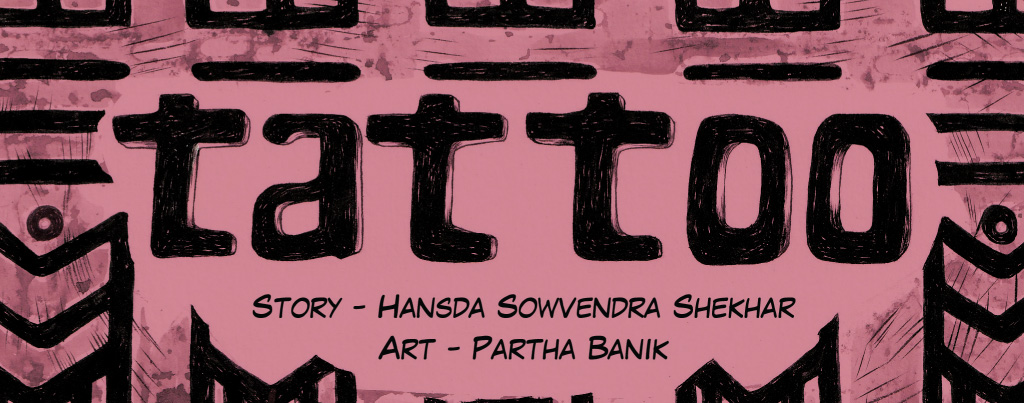
Vol 1 Issue 4 | January-March 2022
Tattoo
Story by Hansda Sowvendra Shekhar | Art by Partha Banik
How is a tattoo made?
A tattoo is a permanent design made on the skin by inserting ink into the dermis layer using needles. This is usually a painful process – getting a tattoo essentially requires making thousands of tiny wounds in the skin. Tattoos would traditionally be made manually. The tattoo artist would puncture the skin with a needle and inject the ink by hand. Nowadays, there are machines to do it, and one can visit a fancy tattoo parlour to get a clean and crisp tattoo.
Watch a close-up, slow-motion video of how a tattoo is made here.
An ancient art
There might be new trends and techniques in tattooing, but the art of the tattoo is millennia old. The oldest evidence of tattooed human skin is that of Ötzi the Iceman, a 5,300-year-old mummy found in a glacier in the Italian Alps in 1991. Ötzi had a total of 61 tattoos on his body! Tattoos have been made for religious, medicinal, cosmetic or functional purposes in different parts of the world, from Japan to Togo to New Zealand, for thousands of years.
Traditional tattooing in southern Jharkhand
In southern Jharkhand, where the writer of this comic is from, traditional tribal tattoo art is called khoda. The black ink used in the traditional process of tattooing is made of soot (which is carbon) from lamps, mixed with coconut oil. Inks used in the modern process of tattooing have chemicals like magnetite crystals, iron oxides, copper silicate, etc. It may surprise some, but tattoos are actually a part of a centuries-old Indian tradition!

